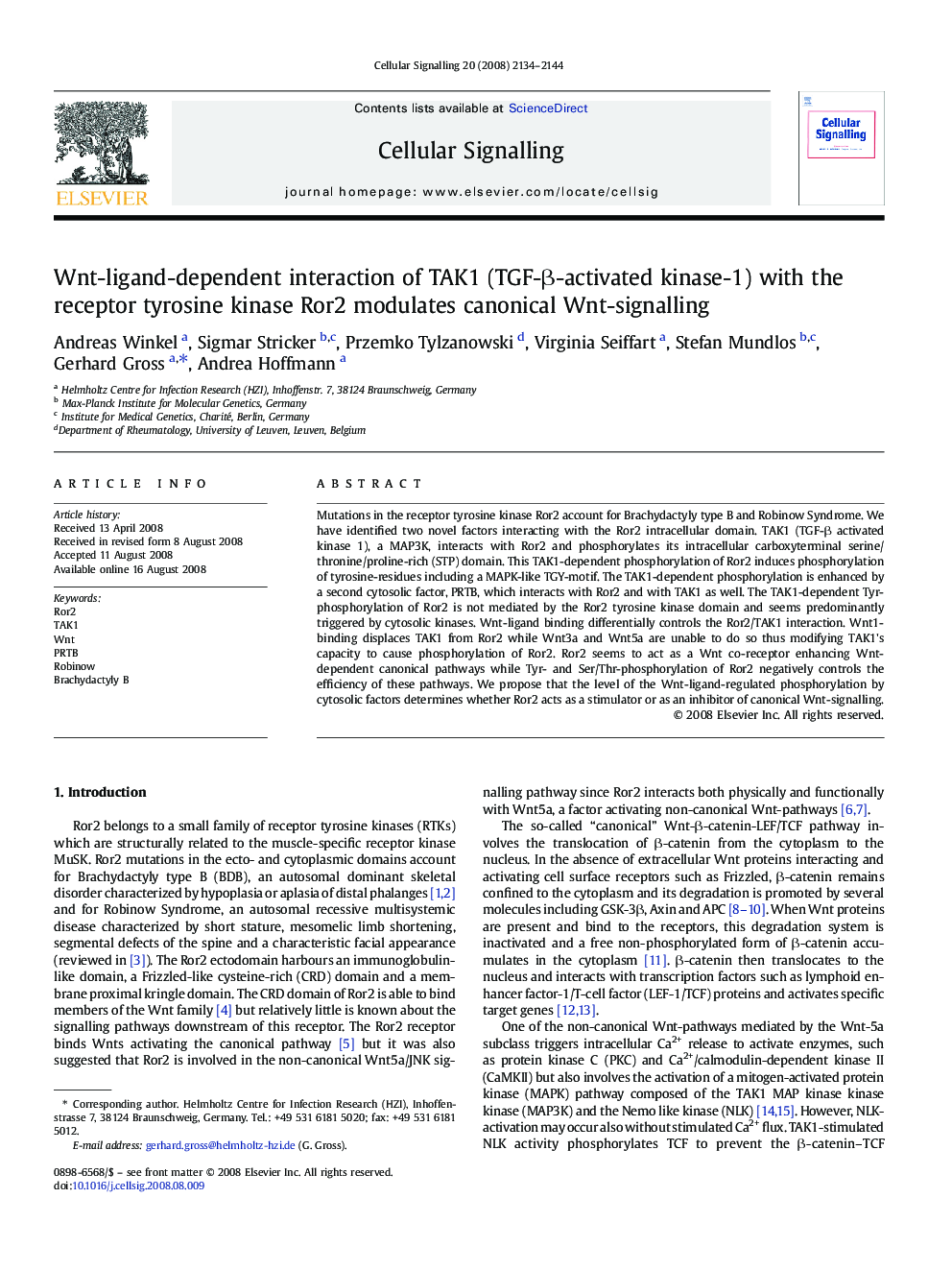| Article ID | Journal | Published Year | Pages | File Type |
|---|---|---|---|---|
| 1964067 | Cellular Signalling | 2008 | 11 Pages |
Mutations in the receptor tyrosine kinase Ror2 account for Brachydactyly type B and Robinow Syndrome. We have identified two novel factors interacting with the Ror2 intracellular domain. TAK1 (TGF-β activated kinase 1), a MAP3K, interacts with Ror2 and phosphorylates its intracellular carboxyterminal serine/thronine/proline-rich (STP) domain. This TAK1-dependent phosphorylation of Ror2 induces phosphorylation of tyrosine-residues including a MAPK-like TGY-motif. The TAK1-dependent phosphorylation is enhanced by a second cytosolic factor, PRTB, which interacts with Ror2 and with TAK1 as well. The TAK1-dependent Tyr-phosphorylation of Ror2 is not mediated by the Ror2 tyrosine kinase domain and seems predominantly triggered by cytosolic kinases. Wnt-ligand binding differentially controls the Ror2/TAK1 interaction. Wnt1-binding displaces TAK1 from Ror2 while Wnt3a and Wnt5a are unable to do so thus modifying TAK1's capacity to cause phosphorylation of Ror2. Ror2 seems to act as a Wnt co-receptor enhancing Wnt-dependent canonical pathways while Tyr- and Ser/Thr-phosphorylation of Ror2 negatively controls the efficiency of these pathways. We propose that the level of the Wnt-ligand-regulated phosphorylation by cytosolic factors determines whether Ror2 acts as a stimulator or as an inhibitor of canonical Wnt-signalling.
